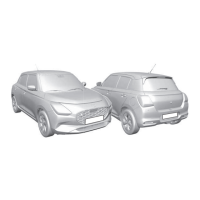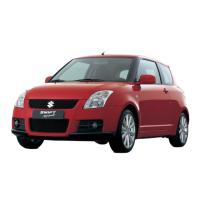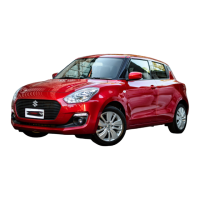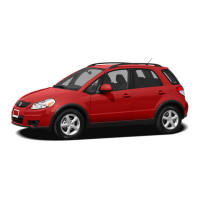11-4
APPEARANCE CARE
69TB-01E
2) Rinse the body to loosen the dirt.
Remove dirt and mud from the body
exterior with running water. You may
use a soft sponge or brush. Do not use
hard materials which can scratch the
paint or plastic. Remember that the
headlight covers or lenses are made of
plastic in many cases.
3) Wash the entire exterior with a mild
detergent or car wash soap using a
sponge or soft cloth. The sponge or
cloth should be frequently soaked in the
soap solution.
4) Once the dirt has been completely
removed, rinse off the detergent with
running water.
5) Wipe off the vehicle body with a wet
chamois or cloth and allow it to dry in
the shade.
6) Check carefully for damage to painted
surfaces. If there is any damage, touch
up the damage following the procedure
below:
1. Clean all damaged spots and allow
them to dry.
2. Stir the paint and touch up the dam-
aged spots lightly using a small
brush.
3. Allow the paint to dry completely.
Washing by an automatic car wash
Washing by a high-pressure
cleaner
Caring for the windshield
If an oil film, etc. adheres to the windshield
and the windshield wipers cannot clean it,
use a glass cleaner (sold separately) to
clean the windshield by hand.
NOTICE
To avoid damage to the paint or plas-
tic surface, do not wipe the dirt off
without ample water. Follow the
above procedure.
NOTICE
When using a commercial car wash
product, observe the cautions speci-
fied by the manufacturer. Never use
strong household detergents or
soaps.
NOTICE
• If you use an automatic car wash,
check that your vehicle’s body
parts, such as antenna and outside
rearview mirror, cannot be dam-
aged. If you are in doubt, consult
the car wash operator for advice.
• Do not wash a car with a roof end
spoiler in an automatic car wash.
It may get caught in the car wash
and damage the spoiler.
NOTICE
If you use a high-pressure cleaner,
keep away the nozzle from your vehi-
cle sufficiently.
• Bringing the nozzle to your vehicle
too close or pointing the nozzle to
the opening of front grill or bumper
etc. can cause damage and mal-
function of the vehicle body and
parts.
• Pointing the nozzle to door glasses
and door frames can allow water to
enter the cabin.

